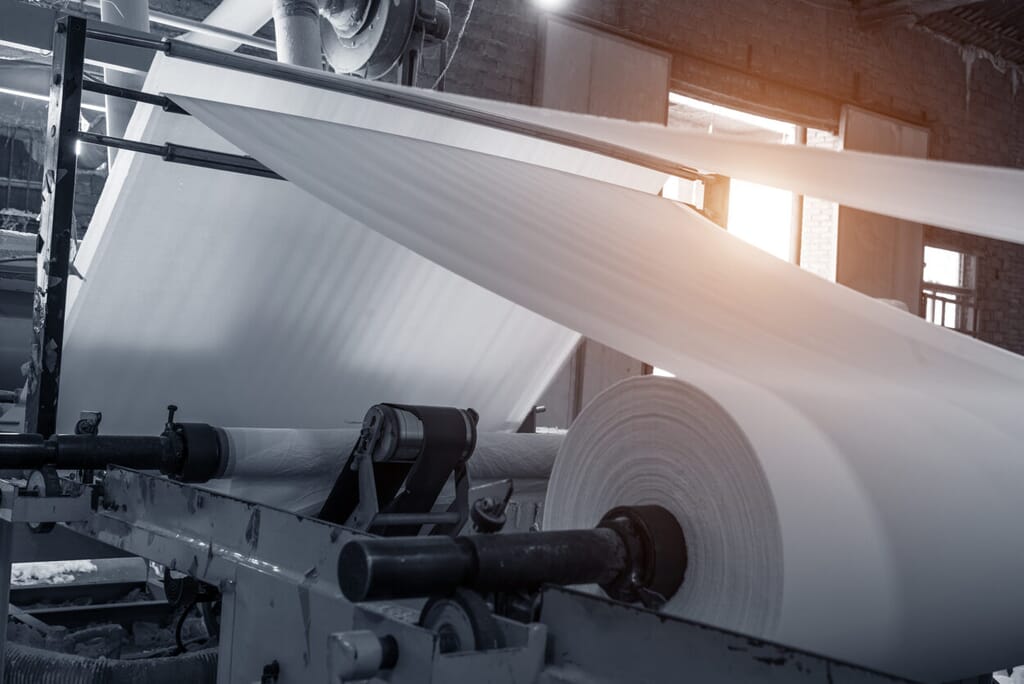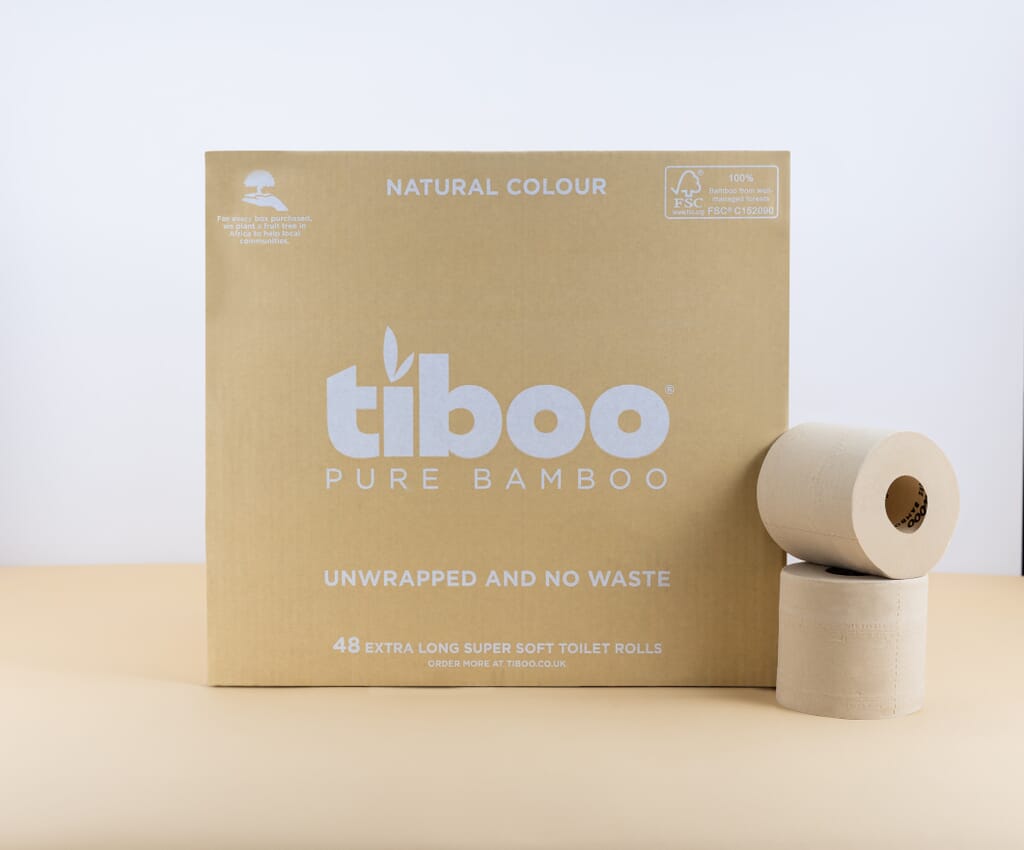You are using an outdated browser. Please upgrade your browser to improve your experience
At Tiboo Bamboo, this is a question we often get asked by our customers. It is hard to image that something as rigid and strong as bamboo could end up as something so soft and delicate and something you are happy to use on some of the most sensitive parts of your body
The process of making bamboo toilet paper is remarkably like the process of making traditional toilet paper from wood chips. The only real difference is one process uses trees as the core ingredient and the other uses more sustainable bamboo. Toilet paper is normally manufactured from new or ‘virgin’ paper, using a combination of hardwood and softwood trees. Softwood trees such as Southern pines have long fibres that wrap around each other which gives the paper strength. Hardwood trees like oak have shorter fibres that make a softer paper. Toilet paper is generally a combination of approximately 70% hardwood and 30% softwood so you can see this is not really the most sustainable solution to the need for toilet paper.
The first thing manufacturers do is to break the bamboo plant down into fibres. Bamboo arrives at the mill and is chipped into a uniform size approximately 1 inch x 1/4 inch. These small pieces make it easier to pulp the bamboo. The batch of chips is then mixed with agents and catalysts in a pressure cooker called a digester. During the cooking process, much of the moisture in the pulp is evaporated and after several hours, a batch of bamboo pulp/ fibres is created.
The pulp then goes through a multistage washer system that removes most of the lignin and the cooking materials. This fluid, called black liquor, is separated from the pulp, which goes on to the next stage of production. The washed bamboo pulp then goes through a process to remove the colour and is mixed again with water to produce a paper stock which is about 99.5% water and 0.5% fibre. The paper stock is sprayed between moving mesh screens which allows much of the water to be drained, producing raw sheets of matted fibre.
This mat is then transferred to a huge, heated cylinder that presses and dries the bamboo paper. Next, the paper is creped, a process that makes it incredibly soft and gives it a slightly wrinkled look. The paper is then loaded onto converting machines that unwind, slit, and rewind it onto long thin cardboard tubing, making a paper log. The paper logs are then cut into rolls, ready to make the final bamboo toilet paper and toilet rolls. At the end of the day, whether from virgin tree pulp or bamboo pulp, the toilet paper production process is mostly the same but the environmental impact of paper from bamboo is significantly lower.
"*" indicates required fields
| Cookie | Duration | Description |
|---|---|---|
| __kla_viewed | never | Klaviyo sets this cookie to collect information on the user's website navigation and preferences. |
| __stripe_mid | 1 year | Stripe sets this cookie to process payments. |
| __stripe_sid | 1 hour | Stripe sets this cookie to process payments. |
| cookielawinfo-checbox-analytics | 11 months | This cookie is set by GDPR Cookie Consent plugin. The cookie is used to store the user consent for the cookies in the category "Analytics". |
| cookielawinfo-checbox-functional | 11 months | The cookie is set by GDPR cookie consent to record the user consent for the cookies in the category "Functional". |
| cookielawinfo-checbox-others | 11 months | This cookie is set by GDPR Cookie Consent plugin. The cookie is used to store the user consent for the cookies in the category "Other. |
| cookielawinfo-checkbox-advertisement | 1 year | Set by the GDPR Cookie Consent plugin, this cookie records the user consent for the cookies in the "Advertisement" category. |
| cookielawinfo-checkbox-necessary | 11 months | This cookie is set by GDPR Cookie Consent plugin. The cookies is used to store the user consent for the cookies in the category "Necessary". |
| cookielawinfo-checkbox-performance | 11 months | This cookie is set by GDPR Cookie Consent plugin. The cookie is used to store the user consent for the cookies in the category "Performance". |
| CookieLawInfoConsent | 1 year | CookieYes sets this cookie to record the default button state of the corresponding category and the status of CCPA. It works only in coordination with the primary cookie. |
| viewed_cookie_policy | 11 months | The cookie is set by the GDPR Cookie Consent plugin and is used to store whether or not user has consented to the use of cookies. It does not store any personal data. |
| wp_woocommerce_session_* | 2 days | WooCommerce sets this cookie to make a unique code for each customer so that it knows where to find the cart data in the database for each one. |
| Cookie | Duration | Description |
|---|---|---|
| __kla_id | 1 year 1 month 4 days | Klaviyo sets this cookie to collect information on the visitor’s behavior. This information is used for internal analytics and to optimise the website. It also registers if the visitor has subscribed to a news letter. |
| _fbp | 7 days | Facebook sets this cookie to display advertisements when either on Facebook or on a digital platform powered by Facebook advertising after visiting the website. |
| _ga | 1 year 1 month 4 days | Google Analytics sets this cookie to calculate visitor, session and campaign data and track site usage for the site's analytics report. The cookie stores information anonymously and assigns a randomly generated number to recognise unique visitors. |
| _ga_* | 1 year 1 month 4 days | Google Analytics sets this cookie to store and count page views. |
| _gcl_au | 3 months | Google Tag Manager sets the cookie to experiment advertisement efficiency of websites using their services. |
| last_pys_landing_page | 7 days | PixelYourSite plugin sets this cookie to manages the analytical services. |
| last_pysTrafficSource | 7 days | PixelYourSite plugin sets this cookie to manage the analytical services. |
| pys_first_visit | 7 days | PixelYourSite plugin sets this cookie to manage the analytical services. |
| pys_landing_page | 7 days | PixelYourSite plugin sets this cookie to manages the analytical services. |
| pys_session_limit | 1 hour | PixelYourSite plugin sets this cookie to manage the analytical services. |
| pys_start_session | session | PixelYourSite plugin sets this cookie to manage the analytical services. |
| pysTrafficSource | 7 days | PixelYourSite plugin sets this cookie to manage the analytical services. |
| Cookie | Duration | Description |
|---|---|---|
| fr | 3 months | Facebook sets this cookie to show relevant advertisements by tracking user behaviour across the web, on sites with Facebook pixel or Facebook social plugin. |
| NID | 6 months | Google sets the cookie for advertising purposes; to limit the number of times the user sees an ad, to unwanted mute ads, and to measure the effectiveness of ads. |
| Cookie | Duration | Description |
|---|---|---|
| m | 1 year 1 month 4 days | No description available. |
| pbid | 6 months | Description is currently not available. |


